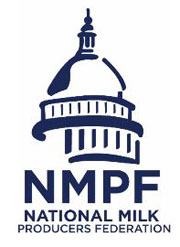The information below has been supplied by dairy marketers and other industry organizations. It has not been edited, verified or endorsed by Hoard’s Dairyman.

The release of the scientific report of the U.S. Dietary Guidelines Advisory Committee has brought predictable criticism from dairy’s detractors, annoyed that a high-nutrient food they dislike for various, easy-to-debunk reasons provides important benefits throughout life and offers essential nutrients Americans otherwise lack without it.
The committee’s scientific report, which is open for public comment through this Thursday, is explicit about dairy’s benefits. The panel report also provides a road map showing what the next dietary guidelines panel needs to see to emphasize dairy’s dietary benefits even further. The panel report is worth a thank-you note – and a nudge forward in evaluation of fats -- from dairy advocates. In fact, a letter is all set up and ready to go, the only catch being that it has to be sent by Thursday.
Some highlights from the 835-page report released last month:
· Dairy is recommended for consumption within all three healthy eating patterns featured in the report, with three servings per day recommended in the Healthy U.S. style eating pattern and Healthy Vegetarian Style patterns and two servings per day in the Healthy-Mediterranean pattern;
· Americans need more dairy in their diets. 88 percent of them fall short of the panel’s recommendations. That includes 79 percent of 9-13-year-olds, who rely heavily on the school-lunch program to meet nutritional needs.
· The committee recognized milk as a nutrient-rich beverage that contributes positively to under-consumed nutrients, including potassium, calcium, phosphorus, magnesium, vitamins A and D, and others;
· Low-fat and nonfat dairy foods are recommended as nutrient-dense building blocks of a healthy diet; and
· In the committee’s first-ever recommendations for birth through 24 months, yogurt and cheese are recognized as complementary feeding options for infants ages 6-12 months, and dairy foods (milk, cheese and yogurt) are included in healthy eating patterns for toddlers 12-24 months.
The report, which the federal government will use when it sets its official Dietary Guidelines for Americans later this year, could have gone even further. Despite mounting evidence of the neutral to beneficial health impact of milkfat, the committee did not fully address the issue. This is disappointing, but the report does still takes a step in the right direction by laying groundwork for dairy’s health benefits to be recognized even more fully in the next dietary guidelines. Tucked on page 791 is a recommendation to:
Examine the effects of different food sources of saturated fats, including animal (e.g., butter, lard) and plant (e.g., palm vs coconut oils) sources, different food matrices that encompass saturated fats (e.g., saturated fats in cheese vs yogurt), and different production techniques (e.g., refined deodorized bleached vs virgin coconut oil) on health outcomes.
Translation: Recent studies showing that dairy fats may be higher-quality and more beneficial than other types of fats are intriguing, but more of them are needed to upend at least five decades of conventional wisdom. That’s the kind of statement from which nutrition scientists can take their cues – and sends a strong signal to them, and to government officials, that it’s time for the long-overdue re-evaluation of whole milk that’s needed to boost healthy diets.
But as we continue building toward that end, it’s important to let the panel know its reaffirmation of dairy was noticed, even as science needs to be nudged forward. The National Milk Producers Federation has a call-to-action campaign on its website (you can go to it directly here) meant to help dairy advocates send the positive message the USDA and Department of Health and Human Services needs to receive as it finalizes the government guidelines. The comment deadline is Aug. 13.
Good things are going dairy’s way. Higher retail sales, along with a greater appreciation of dairy farmers and their cooperatives in a time of crisis, are reasons to be upbeat despite today’s challenges. The Dietary Guidelines are another help – and their improvement is a cause worth pursuing.





